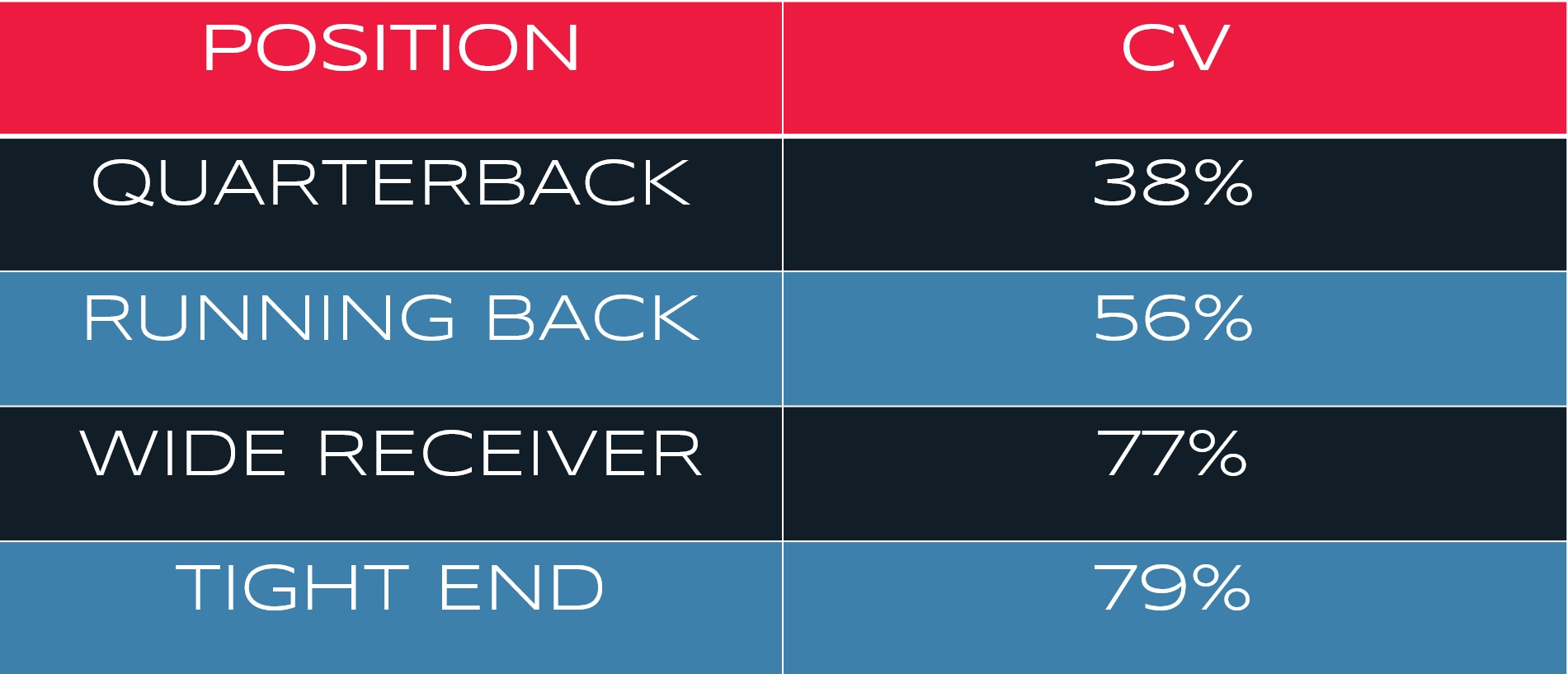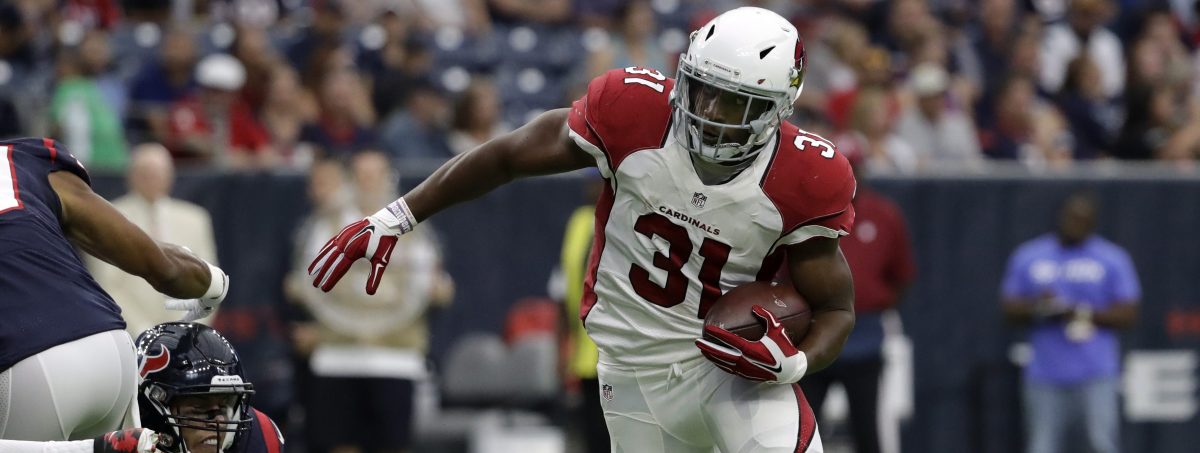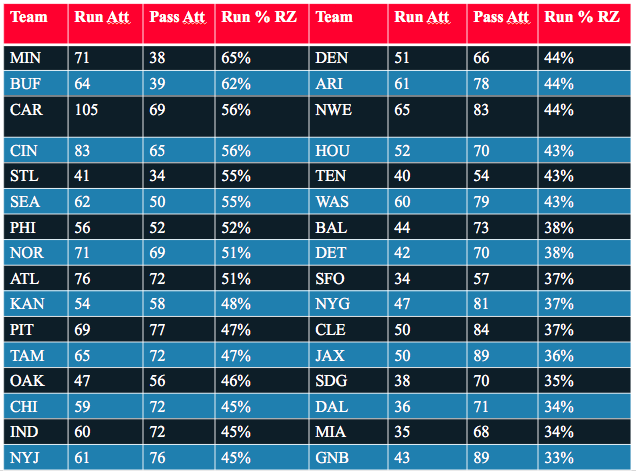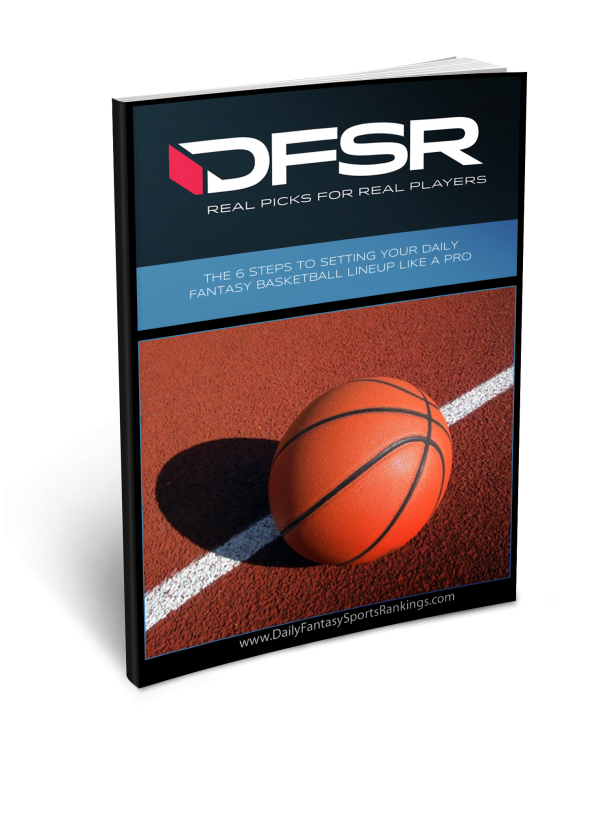featured Daily Fantasy Expert Advice

Finding good running plays when playing daily fantasy football on FanDuel and DraftKings
One of the most common themes in our considerable reader email each football season is, "how do I find a good QB/RB/WR/TE for double ups/big tournaments/heads up games." Which is to say, "how do I play daily fantasy football?" Well, that might be an oversimplification. But the feeling behind it is sincere - daily fantasy football is one of the most complex of all of the DFS contests because analyzing each position is an endeavor entirely unto itself. While there is some overlap, trying to figure out a good QB AND a good RB - to say nothing of a solid tight end or defense - requires analyzing all different kinds of data. This year, we're going to take selections out of our free NFL eBook and take an even deeper dive into how we go about picking players at each position for each kind of contest.
Today, we're going to look at Running Back. We hope you enjoy!
In case you didn’t notice, on Saturday we released our brand new NFL DFS suite of tools including full projections, optimal NFL lineups and Player Lab which includes filters to help you create NFL lineups for FanDuel and DraftKings. It’s a robust set of tools; well beyond anything we’ve ever had and something we feel will help our users *ahem* tackle the NFL season.
Using tools like these for the NFL season is crucial and you can grab a free 2 WEEK trial to test out yourself.
FINDING GOOD DAILY FANTASY RUNNING BACKS
No other position in football has changed as dramatically in terms of fantasy relevance over the last five years or so than the running back. Just look at your year-long positional rankings/cheatsheets for some insight on this. Gone are the days when you’d spend the entire first round of a draft sweating out getting that workhorse bellcow. Much of the NFL just doesn’t operate in this fashion anymore with the passing game becoming the focal point of many an offense.
It makes sense. Why get a player destroyed every play by running into a heaping pile of muscle and adrenaline when you can just throw passes into any section of the field and control the tempo?
Now of course I alluded to season long rankings to start this piece even though we are a daily fantasy sports site. But it provides a nice illustration as to how the idea of the running back has shifted both from a fantasy perspective and how teams utilize the position now.
With this in mind, we need to understand how to fill the running back position on FanDuel and DraftKings.
Running Backs and Relative “Safety”
Last season, of the 20 highest scoring fantasy games from skill position players, 9 of them were by a running back (FanDuel Scoring). Now one thing that throws this off some is Antonio Brown. Brown accounted for 4 of the top twenty on his own. Considering no running back had more than two of these twenty games and one WR accounted for 20% of them, we can look still at running back as a high upside position.
But it’s also one of the safer positions on the field. Outside of the quarterback, running backs come in next in terms of coefficient of variation. This number is essentially a player’s standard deviation divided by their average performance. It’s a way to see how much player’s deviate comparatively the entire group. Below are the average CVs by position.

The quarterback is the safest position in fantasy, but the running back is running a close-ish second. Here’s the thing with running backs. If they are the starters, their situations remain among the most predictable and safe of any position. Last season, the top twenty running backs in terms of overall fantasy points had an average CV of .50 when they started. This threshold is low and implies running backs are “predictable” in the sense that they tend not to deviate wildly from their personal mean performance. The top twenty WRs also fell in that safe range. The difference between RB and WR though is when you get out of the top twenty. The running backs remain relatively predictable while the WRs really start to fluctuate. When we get outside that top twenty WRs, which we will need to because you will roster more WRs in DFS (3) than RBs (2) you see the results become a lot more variable or risky
Top 20 RBs CV - .50
Top 20 WRs - .55
Top 30 RBs CV - .55
Top 30 WRs CV - .77
Things really start to spike outside of the two 20 for WR which makes sense. We are getting more into WR2-WR3 range or just WR1s on crap teams.
We don’t need to often take risks with running backs like maybe a WR because we roster less of them and can typically find middle-to-lower tier salaries with higher floors (we’ll get to opportunity in just one sec). Understanding a situation for a running back and having a solid projection will remain a safer venture for this position.
With runnings backs, while not an exact science, if we can predict the correct amount of carries and targets within a somewhat confident range, we should be able to determine a baseline production.
Opportunity Knocks
Now of course, one of first things we want to look for is a running back with a newly increased chance at opportunity. This can come most often in the form of an injury or a shift in team approach (or both). For instance in Week 13 of last season David Johnson assumed the starting RB1 role for the Cardinals. He was priced at $5900 on FanDuel after ¾ a season coming off the bench and returning kicks. Then, in Week 13 he rang up 22 carries and 3 targets for 120 total yards and a TD. It was the value play of the year practically. I say practically, because two weeks later with his price only up about 10% to $6500 (still a bargain) he went 29/187/3 and 4/42 in the best overall game for any running back all season. The FD and DK salaries didn’t come anywhere close to his new found opportunity and players who missed out on this were well dusted. But the signs were all there. He was appointed the starter, had significant opportunity on a good team and capitalized.
These situations are critical in DFS. Understanding whose role has changed and grabbing the value is key at the running back position. It’s not always completely cut and dry. For instance when Jamaal Charles went down last season, the Chiefs chose a committee approach which didn’t help anyone specifically. These things aren’t binary. We need to read reports (sometimes through the lines) in order to understand what a team plans on doing. It’s not an exact science.
Early in the season we will have to make some of these decisions based on team-speak, news from reporters, some pre-season tendencies and other subjective odds and ends. There are running backs like Lamar Miler and Ezekiel Elliott heading into completely new situations which we may have to guess some on. We will work hard to determine just how many carries they stand to get in their new roles and how that will influence their fantasy performance. Early in the season can be tricky this way.
Red Zone: Let’s get Down and Close
Ah, the ever-elusive touchdown. No other stat (maybe outside of the home run in baseball) is as important and variable as getting into that end zone. Once we’ve sussed out overall opportunity we need to find running backs who have the ultimate opportunity, scoring touchdowns. And again, at the risk of sounding painfully obvious, a running back is unlikely to score touchdowns unless he is getting the ball near the end zone. I know that ranks in the “duh” category, but if a running back isn’t factored heavily in a team’s red zone strategy then his chances at celebrating in the promised land just don’t equate. And we can look at some teams to know what their plans are in the red zone. Here’s a handy chart to see what teams did in the Red Zone last year:
From a strictly volume perspective, Carolina was the landslide leader in running around in the end zone. A big portion of that was Cam Newton’s ability to get out of the pocket so we of course can’t look and say Jonathan Stewart is the heavy favorite to get lead touches down and close. But overall volume is one thing. We also need to ask ourselves how teams operate once they get down there.
We want to target running backs on teams who actually get near the end zone and then run the ball. So while we can look and say STL/LA ran more times than they threw in the RZ, the problem was they never really got there. Could this impact Todd Gurley? Possibly.
We also want to take note of a possibly shift in strategy. Last season the 49ers threw much more often in the Red Zone, but now they are under the command of Chip Kelly whose Eagles squads were much more likely to run. That could boost someone like Carlos Hyde's TD output.
All that being said, many of these teams are running out similar personnel and coaching situations as last year so it stands to reason Adrian Peterson will continue seeing a healthy dose of Red Zone touches.
Vegas and Game Scripts
We also need to look for running backs in good team situations and matchups. And though Vegas isn't the be-all, end-all for this, they can help. While there wasn’t a strong correlation between Vegas money lines and running back performance (that I could find), a quick look at the top 100 overall games for RBs last season and we see that only about 12% were from players whose teams came in as +5 dogs or more (and four of them were the Bears’ RBs Forte and Langford because the Bears sucked and didn’t really have any other options on offense). It’s easy to draw a logical conclusion between the Vegas spread and running back performance. If the team is a heavy underdog they A: likely stink and B: will be playing from behind which typically means less running the ball. That’s a double whammy on expectation. So let’s go ahead and try and avoid running backs who come in as heavy underdogs.
Now on the flip side of things, of those top 100 games, 30 of them came when a team was -4.5 favorites or more going in. Nearly triple the output for the other side of the Vegas coin. Again, the correlation isn’t strong across the board (likely because so many games have a “thin spread” coming in which jukes with the stats) but being a favorite in a game appears to clearly favor the running back.
The rest of the performances fall within that aforementioned “thin spread” category and are games we can also target running backs. It’s worth mentioning here that our models incorporate this predictive data.
Wrap it up D
There's so much to think about when rostering a running back in daily fantasy. It's just one piece of the lineup puzzle you'll need to suss out on a week-to-week basis. If you want to cut down on some time, we've incorporated all of the above considerations and more in our projection system. NFL, like all DFS, is a game of inches and you want to make sure you're getting the best value possible from every position. Make sure you sign up for access to our projections, Player Lab and more.
image sources
2 Visitor Comments
Post a Reply
You must be logged in to post a comment.

 Free Player Lab Trial
Free Player Lab Trial





What is CV %?
Think it’s coefficient of variation.